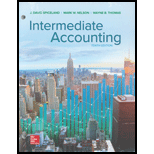
Method of Inventory: Inventory refers to the current assets that a company expects to sell during the normal course of business operations, the goods that are under process to be completed for future sale, or currently used for producing goods to be sold in the market. Inventory is valued under three methods:
FIFO: Under this inventory method, the units that are purchased first, are sold first. Thus, it starts from the selling of the beginning inventory, followed by the units purchased in a chronological order of their purchases took place during a particular period.
LIFO: Under this inventory method, the units that are purchased last, are sold first. Thus, it starts from the selling of the units recently purchased and ending with the beginning inventory.
Average cost method: Under this method, the cost of the goods available for sale is divided by the number of units available for sale during a particular period.
To Explain: the meaning of the Internal Revenue Service conformity rule with respect to the inventory method choice.
Want to see the full answer?
Check out a sample textbook solution
Chapter 8 Solutions
INTERMEDIATE ACCOUNTING <CUSTOM LL>
- I am looking for the most effective method for solving this financial accounting problem.arrow_forwardI am looking for help with this general accounting question using proper accounting standards.arrow_forwardI need help with this general accounting problem using proper accounting guidelines.arrow_forward
- Accurate answerarrow_forwardYork Digital has an accounts receivable turnover for the year of 7.5. Net sales for the period are $180,000. What is the number of days' sales in receivables?arrow_forwardABD Enterprises' total quick assets were $7,420,000, its current assets were $10,100,000, and its current liabilities were $6,800,000. Its acid-test ratio equals _.arrow_forward
- Can you help me solve this financial accounting question using valid financial accounting techniques?arrow_forwardAn item of equipment owned by Thurman Manufacturing cost $180,000 and had an estimated use of 75,000 hours. During the first 3 years, the equipment was used for 15,000, 13,500, and 12,000 hours. The equipment has an estimated life of 7 years and an estimated salvage value of $22,500.arrow_forwardGeneral accountingarrow_forward
 Auditing: A Risk Based-Approach (MindTap Course L...AccountingISBN:9781337619455Author:Karla M Johnstone, Audrey A. Gramling, Larry E. RittenbergPublisher:Cengage LearningPrinciples of Accounting Volume 1AccountingISBN:9781947172685Author:OpenStaxPublisher:OpenStax College
Auditing: A Risk Based-Approach (MindTap Course L...AccountingISBN:9781337619455Author:Karla M Johnstone, Audrey A. Gramling, Larry E. RittenbergPublisher:Cengage LearningPrinciples of Accounting Volume 1AccountingISBN:9781947172685Author:OpenStaxPublisher:OpenStax College Auditing: A Risk Based-Approach to Conducting a Q...AccountingISBN:9781305080577Author:Karla M Johnstone, Audrey A. Gramling, Larry E. RittenbergPublisher:South-Western College Pub
Auditing: A Risk Based-Approach to Conducting a Q...AccountingISBN:9781305080577Author:Karla M Johnstone, Audrey A. Gramling, Larry E. RittenbergPublisher:South-Western College Pub Cornerstones of Financial AccountingAccountingISBN:9781337690881Author:Jay Rich, Jeff JonesPublisher:Cengage Learning
Cornerstones of Financial AccountingAccountingISBN:9781337690881Author:Jay Rich, Jeff JonesPublisher:Cengage Learning Financial And Managerial AccountingAccountingISBN:9781337902663Author:WARREN, Carl S.Publisher:Cengage Learning,
Financial And Managerial AccountingAccountingISBN:9781337902663Author:WARREN, Carl S.Publisher:Cengage Learning,





